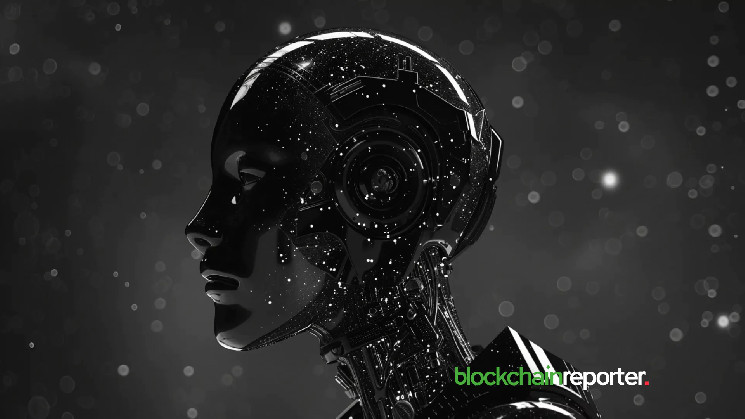- Blockchain: distributed database
- AI: the cognitive engine that makes machines possible
- Blockchain and AI: Use Cases
- Enhanced security and fraud prevention
- Decentralized data storage
- Smart contracts and automation
- Possible Benefits of AI and Blockchain Integration
- Possible risks of AI and Blockchain integration
- Final thoughts
The AI story has become one of the three biggest stories in the current bull run, highlighting the revolutionary nature of AI. The other two stories that will succeed along with AI this cycle include Memecoins and real-world assets (RWA). Complementing this, GameFi’s combination of gaming and decentralized finance also creates new opportunities. All of these stories shape the overall trajectory of the development of decentralized technologies. Going forward, these stories will focus on the dominance of AI, RWAs, and GameFi in their respective industries. However, the outcome of the merger of AI with Blockchain is the greatest thing that can ever happen in the digital asset ecosystem.
Blockchain: distributed database
Imagine a notebook that is accessible to everyone, where the entries are permanent and cannot be deleted. It is a digital ledger that is clear, secure and shared over a decentralized network. As a result, it functions as a distributed database, eliminating the need for a centralized authority. However, it also ensures data integrity and trust between participants.
AI: the cognitive engine that makes machines possible
Artificial intelligence is where programs have the ability to learn and adapt. AI is not limited to learning, but also includes the development and architecture of basic intelligent algorithms. These intelligent algorithms imitate the function of human learning. They enable machines to analyze and understand data, learn from it and then make decisions independently. Furthermore, AI acts as a cognitive locomotive for machines. It is constantly evolving in the form of a virtual assistant to perfect its interface and applications for various practical applications in daily life. For example, in the form of the well-known AI model ChatGPT.
Blockchain and AI: Use Cases
The combination of blockchain and AI is driving systematic change in every sector. It is a reinvention of traditional methods and offering new opportunities. These two phenomena are driving today’s bull rallies and, in combination, are creating an era of revolution and productivity. Below are some fascinating examples of how two similar technologies interact to create incredible benefits.
Enhanced security and fraud prevention
Leverage the inherent protection qualities of blockchain to make AI immune to hacking and instability. The addition of additional protection, introduced by a distributed network via blockchain and a wide range of cryptography systems, improved AI algorithms. For example, AI models can only be used based on the terms specified in a smart contract. In addition, an authorized participant can prevent illegal access. The imagination improves the security of a wide range of databases, from banking to the healthcare industry.
Decentralized data storage
Integrate blockchain-based decentralized storage solutions to ensure that the data on which AI bases its decision-making at scale is pure and accurate. AI will be protected against the use of decentralized storage through encryption. These encryptions make sensitive data immune to modification. Blockchains use special artificial intelligence learning methods for different likely scenarios in the future.
Smart contracts and automation
Smart contracts consist of predefined rules laid out in a self-executing contract, making them the exemplar of blockchain and AI integration sophistication. AI algorithms in smart contracts facilitate another layer of explicitness. This integration allows them to carry out assignments without being dependent on human intermediaries. The collaboration between blockchain and AI creates a balance that will lead to fully automated systems. It sounds like the AI story is increasing the potential in the ongoing bull run.
Possible Benefits of AI and Blockchain Integration
Enhanced security: The tamper-proof system, secured by blockchain, enables AI to detect irregularities and ensure data confidentiality is maintained. It reduces the chance of data leaks or unauthorized access.
Improved efficiency: AI uses the ledger of blockchain, while the latter uses the data analytics of AI, which enhances the processes, thus reducing operational costs and decision-making time.
Personalized experiences: The combination of AI and blockchain ensures that organizations use personalized data. As a result, it generates product recommendations and services provided by an individual.
Possible risks of AI and Blockchain integration
AI Algorithm Biasness: AI algorithms learn from training data, meaning they are likely to have inherited bias from the data and therefore may make unfair decisions.
Integration complexity: Blockchain along with other complex technologies such as AI could become challenging to integrate into organizations as they would significantly disrupt traditional systems and processes.
Regulatory issues: Because blockchain and AI are rapidly evolving and advancing. Likewise, it is also possible that they will evolve faster than the regulatory frameworks that control compliance regulations and laws.
Final thoughts
In conclusion, it is important to emphasize again that the AI story is undoubtedly gaining momentum in the current bull run. We must remain aware of the potential risks associated with the integration of blockchain and AI. The threat of AI algorithms, the complexity of integration, and the uncertainty of regulation will bring significant threats to the AI story. However, as we recognize these risks, we are only strengthening the foundations of the AI story to ensure its prosperity in the years to come.

